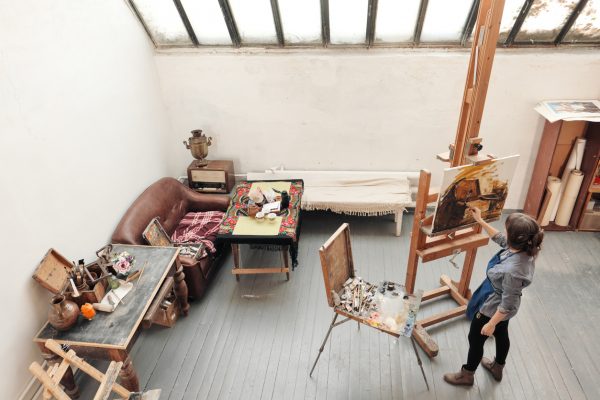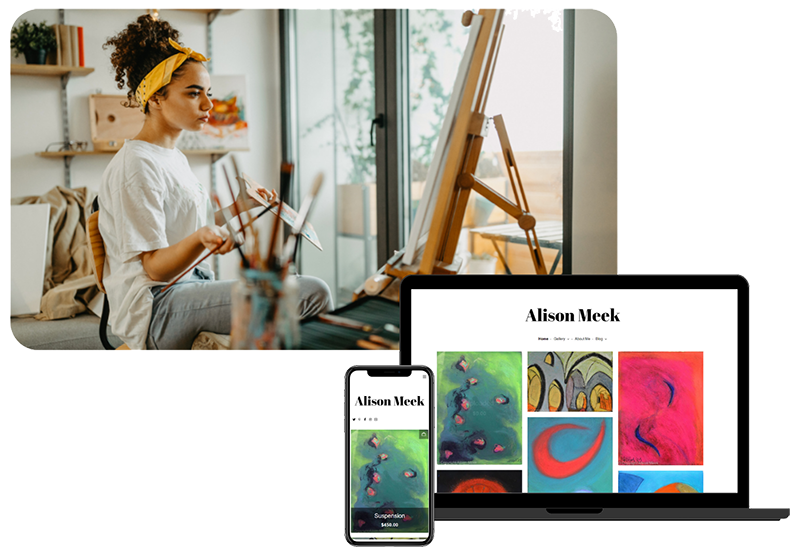It is many an amateur and even professional artist’s dream to have access to their own working space. They may have this aspiration for many different reasons — perhaps a simple lack of space at home in which to get out the oils, or maybe a desire to connect with like-minded peers. But it can be tricky to know where to start looking for spaces and what things to look out for in a studio.

Do you even need an art studio?
It’s a reasonable question, given the tendency for so many of today’s art practices to transcend the physical dimensions of the traditional studio. However, it’s worth remembering that in renting a studio, you aren’t necessarily just gaining access to work space, but also to connections to the wider art world that you may have never had otherwise. Studio providers dotted around the UK can give invaluable access to cut-price and/or exclusive artist’s workshops, seminars, courses, residencies, fellowships and opportunities to exhibit. Many artists working in education and the media may have never landed their present roles if they had restricted their studio space to their living room or garden shed, to say nothing of the mutual support that their fellow artists provide and the group dynamic that helps to stimulate their practice.
Art studio costs
Of course, when you are looking for your own studio — as London and Kent artists, for example, may start to do via the online Artist’s Studio Finder — price will always be a critical factor. I pay £55 a calendar month for my own studio in a small town in the North East of England, with no need to worry about additional costs other than those incurred travelling there and back.

However, you could easily find yourself quoted around £1,400 per month for the best studios in the most desirable locations. Before putting pen to paper on any deal, you should clarify with the studio provider the full cost you will be require to pay, as you won’t want to be sent into the red by the unexpected need to pay business rates on your space, for example.
Potential ways to cut costs include sharing a space with another artist, although you should bear in mind that this may involve a joint tenancy agreement that leaves you liable for the entire rent in the event of your studio mate’s failure to pay. If you are worried about your ability to pay rent on time, whether as a sole or joint tenant, ask the landlord how flexible they are in this regard.
Consider, as well, how cheap and convenient it is to travel to your studio space. For example, £10-20 a week is probably reasonable in most locations and for most artists, but any more than that may force you to reconsider your choice of studio. If car or bus travel is too awkward, can you cycle or walk there and back easily enough?
Assessing your practical needs from a studio
When comparing artist studios, remember that some may be permanent, purpose-built artist’s studio complexes, while others may be temporary spaces, only accessible for artists’ use until a buyer or business shows an interest in moving into the building. As the holder of a temporary studio, you may only be given a few weeks’ notice to move out.
Then, there is the slight issue of opening hours. My previous studio space was staffed by security and only reachable through a shopping centre, closing at 8 pm on weekdays and before 5 pm on Sundays — not ideal given my 9 am to 6 pm working week. Once I ceased to solely freelance in favour of a full-time job in a neighbouring town, the times I was free to attend to my practice didn’t correspond well with the hours the studio was actually open.

There are many more questions that you will have to ask yourself to determine the right studio for you. If, for example, you prefer working with or nattering with other artists to a more solitary life, does the studio complex have a communal atmosphere or will you be the only one there every evening? Are there other artists who you admire and who have rented in this studio complex previously, and who can therefore tell you what it’s really like to work there? Does the studio come with an attached gallery or offer other obvious exhibition opportunities, and are there links with schools, colleges, universities and community groups?
You may also want to ask what open studio events and get-togethers the studio may host to give you easy opportunities to meet new people, become more familiar with your fellow artists and promote — or even sell — your work to a wider audience. All of these additional resources are often closer at hand when you rent your studio through a larger arts charity like Bow Arts in London or East Street Arts in Leeds, which may require you to join for a reasonable yearly fee.
Remember that you have plenty of options
Finally, remember that renting a studio in the conventional manner is far from your only option if you wish to find more space for your art practice.

If you are concerned about the mounting expense of both your day-to-day living costs and a studio space, consider a combined live/work space. If, meanwhile, your month-by-month budget may be sufficiently unpredictable as to make a permanent studio unfeasible, look into open-access studios, like Northern Print in Newcastle upon Tyne. There really is an incredibly wide range of options out there for aspiring artist studio holders of both amateur and professional stripes, and if there doesn’t currently seem to be, you should never be afraid to be inventive and opportunistic about exactly when, where and how you work.
This post was originally published in March 2016. Last updated on August 31, 2021.







